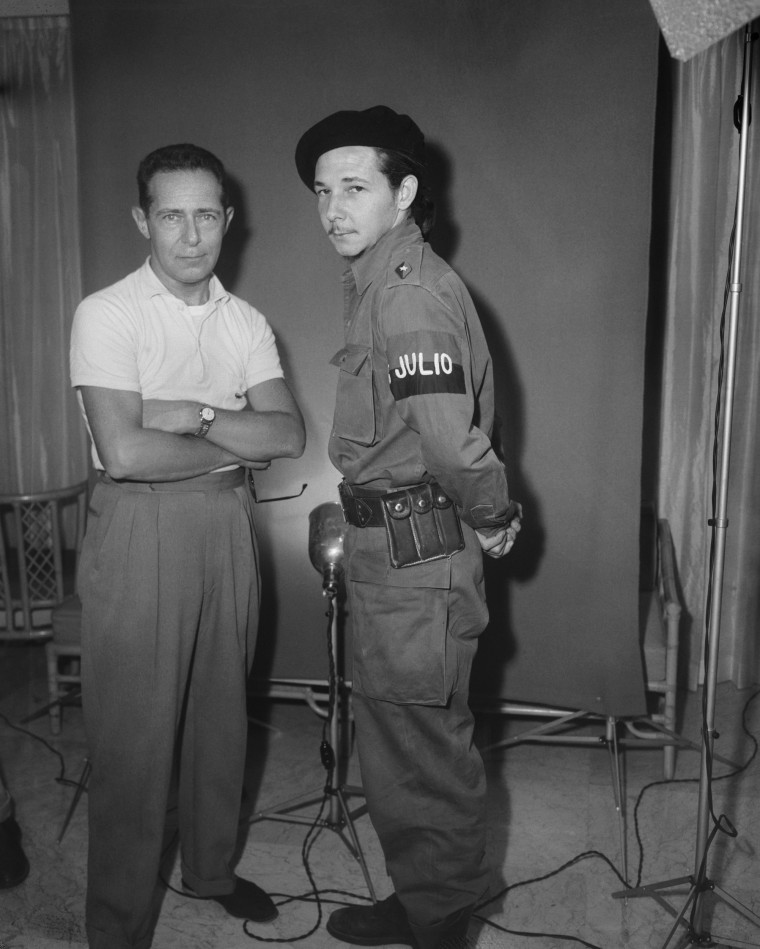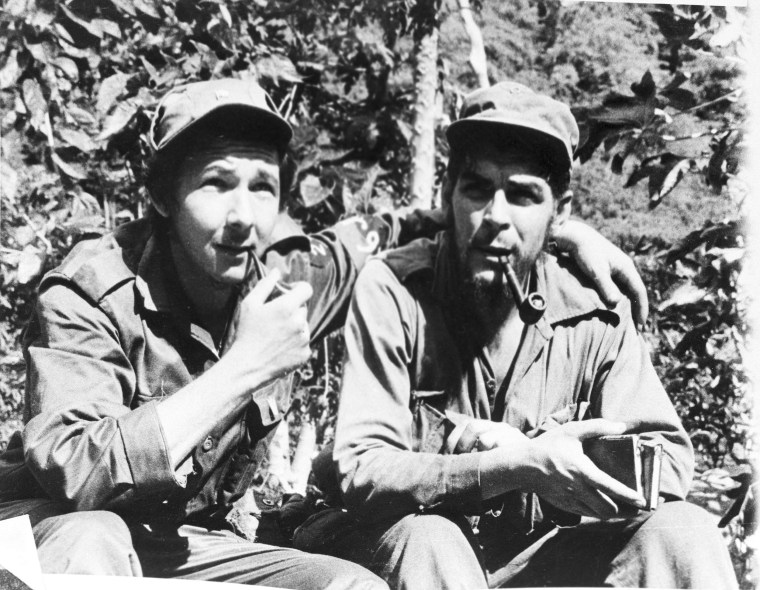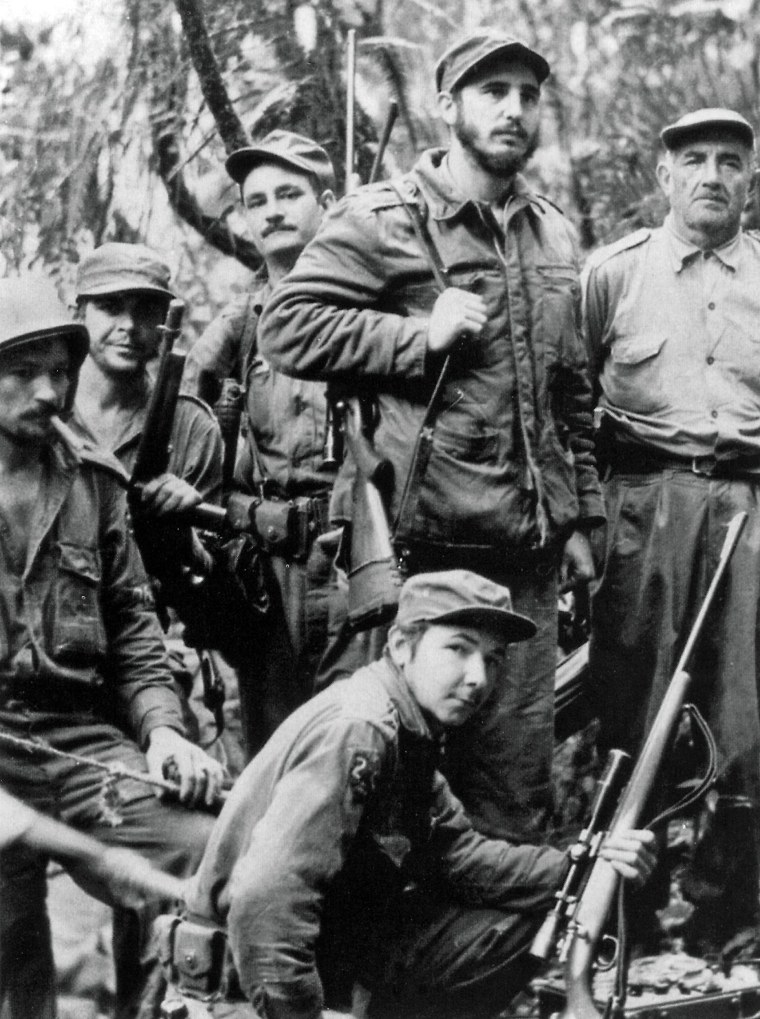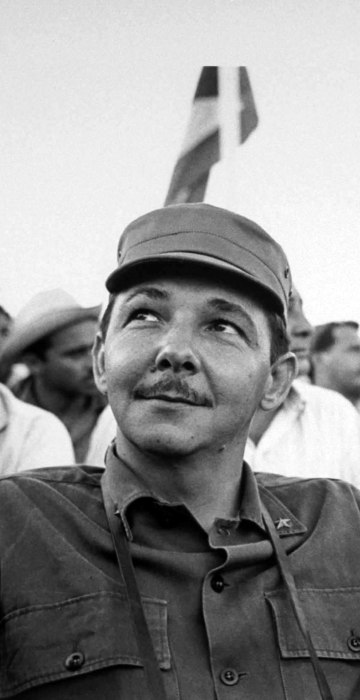
In Focus
End of an Era: Cuban President Raúl Castro steps down
Castro, 86, remains head of the Communist Party as former VP Miguel Diaz-Canel becomes the first non-Castro president in over 40 years.

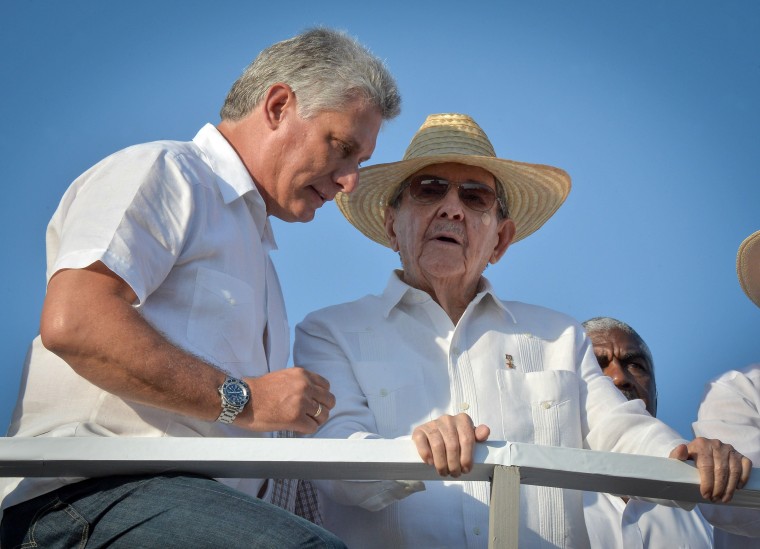
Cuban President Raúl Castro and First Vice-President Miguel Díaz-Canel attend the May Day parade at Revolution Square in Havana on May 1, 2016.
The 57-year-old was Castro's pre-ordained choice for when he stepped down on April 19, 2018. As a result, the National Assembly's vote to appoint him was little more than a formality. The successor to Fidel and Raul Castro has spent three decades climbing to the summit of the Communist Party. He is ideally placed to continue to implement the economic reforms initiated by his 86-year-old mentor.

U.S. President Barack Obama and Raúl Castro attend an exhibition game between the Cuban national team and the Major League Baseball team Tampa Bay Devil Rays at the Estado Latinoamericano in Havana, on March 22, 2016. It was the first time a sitting president visited Cuba in 88 years.

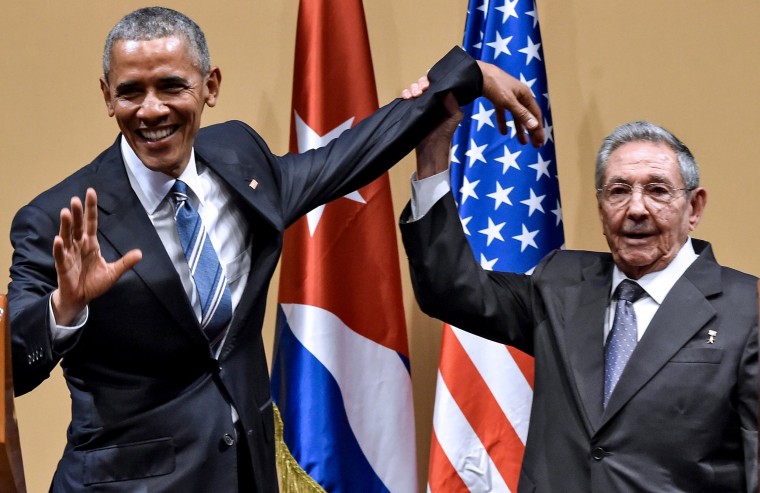
Castro raises Obama's hand during a meeting at the Revolution Palace in Havana on March 21, 2016.
Cuba's communist president stood next to Obama and hailed his opposition to a long-standing economic "blockade," but said it would need to end before ties are fully normalized.
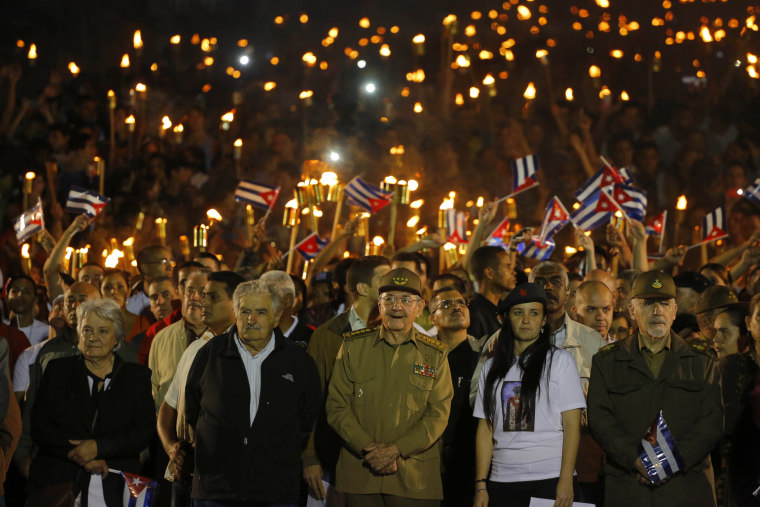
Castro along with Uruguay's former President José Mujica, his wife Sen. Lucía Topolansky, President of University Students Federation Jennifer Bello and Revolutionary Commander Ramiro Valdés,take part in a march with torches to mark the 163rd anniversary of the birth of Cuba's national independence hero Jose Martí, in Havana, Jan. 27, 2016.



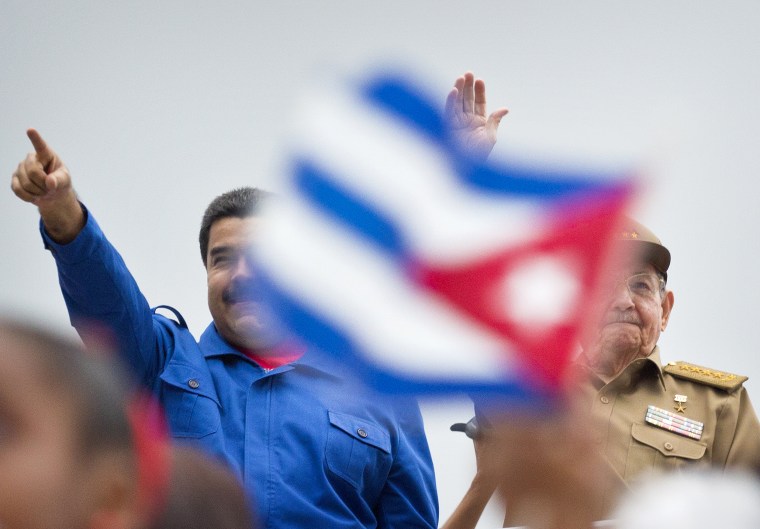

Fidel Castro and his brother talk during the opening session of the National Assembly in Havana, Feb. 24, 2012.
Cuban President Raul Castro accepted a new five-year term that will be, he said, his last and tapped rising star Miguel Diaz-Canel, 52, as vice president and first in the line of succession. Diaz-Canel has risen higher than any other Cuban official who didn't directly participate in the 1959 Cuban revolution.
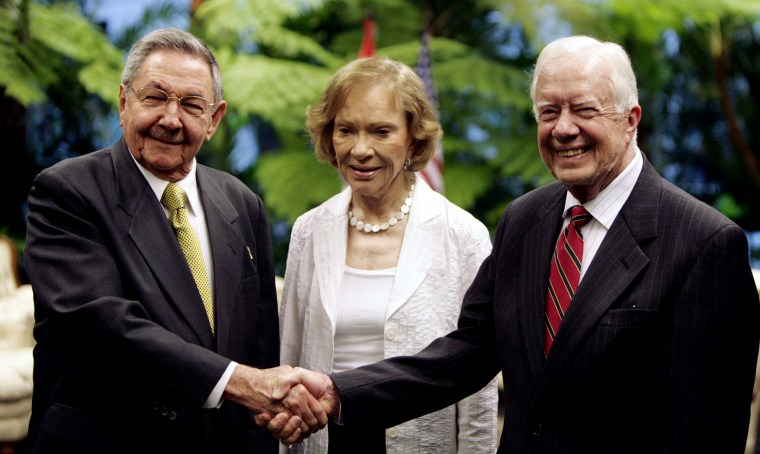
Raúl Castro, former President Jimmy Carter and his wife Rosalynn pose for a photo at Revolution Palace in Havana, March 29, 2011.
Carter and his wife Rosalynn stayed on the island for three days. He also visited Cuba in 2002 and, before Barack Obama, was the only former U.S. president to do so since the 1959 revolution.
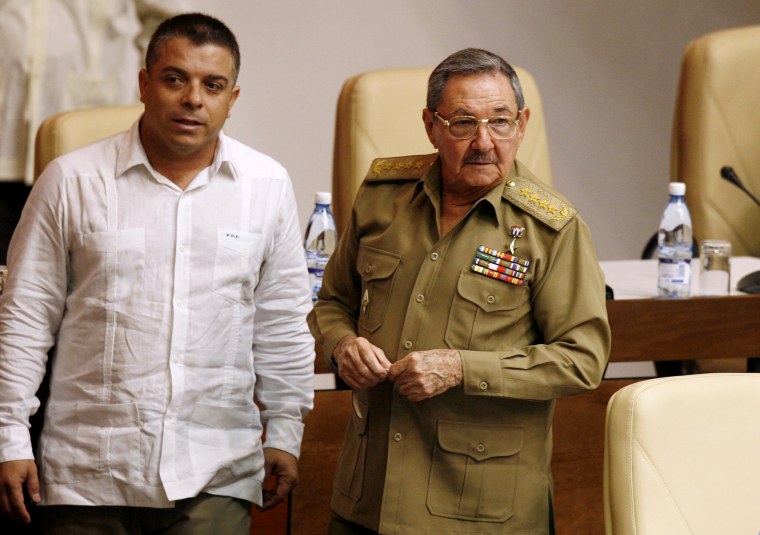
Foreign Minister Felipe Pérez Roque with Castro during a session of the National Assembly of Popular Power in Havana, June 29, 2007.
Castro abruptly removed some of Cuba's most powerful officials on March 2, 2009, including Pérez Roque, putting a personal stamp on the government in what was then the biggest shakeup since he took over from his ailing brother Fidel a year prior.
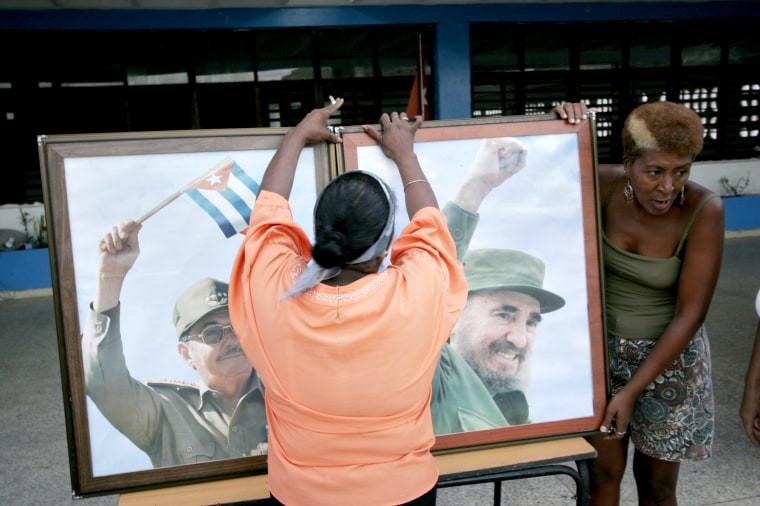
Communist Party members set up framed photographs of the Castros as they prepare for a political rally supporting Fidel Castro and the Cuban Revolution on Aug. 4, 2006, in Havana.
Four days prior, Fidel temporarily handed power to his brother Raúl while he recovered from intestinal surgery.

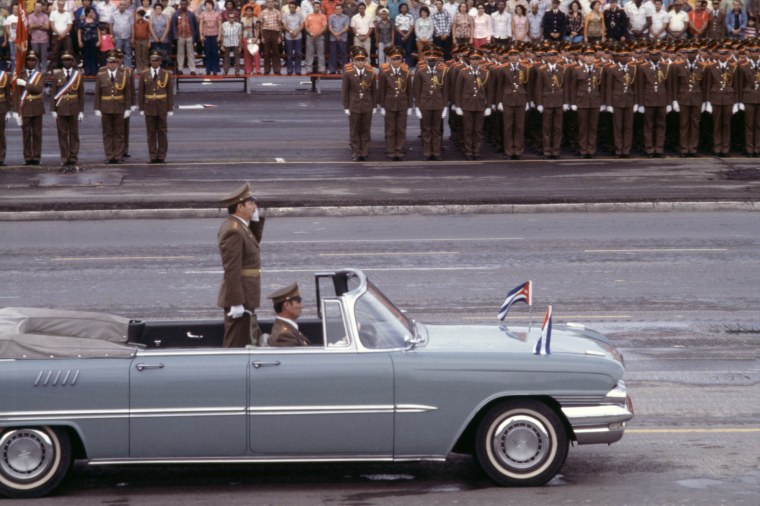
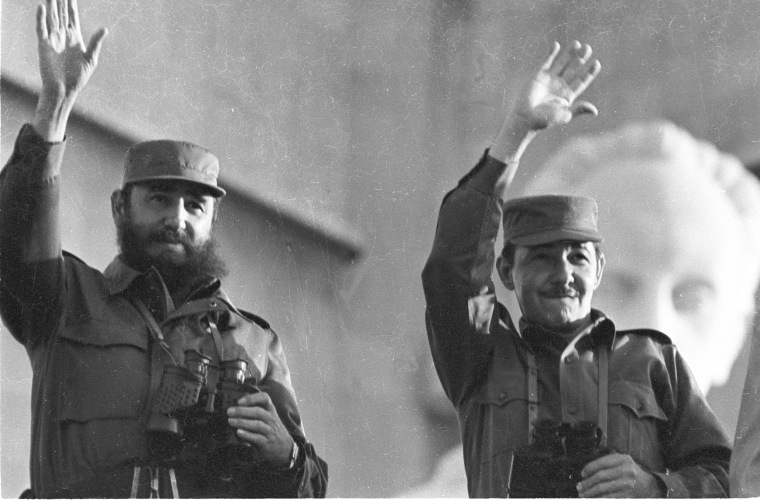
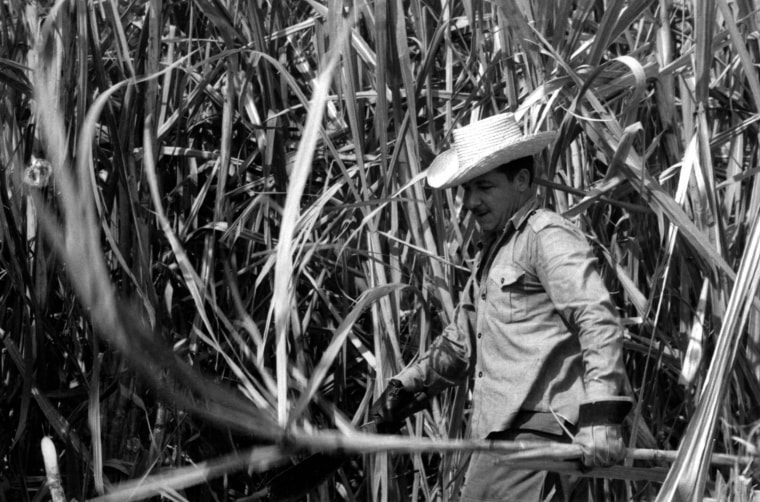
Raúl Castro cuts sugar cane in the fields of Cuba in 1970. After then-Premier Fidel Castro described the 1969 sugar harvest as an "agony for the country," he declared the key to economic advancement would come through increased sugar production and set a goal for the 1970 harvest to produce 10 million tons of sugar. The government put in place a model for "war economy," and redirected most resources into the sugar sector. Between November and July, Cuban industrial employees, city dwellers, school children, housewives, government officials and a "brigade" of Russians and Americans took to the fields wielding machetes.

